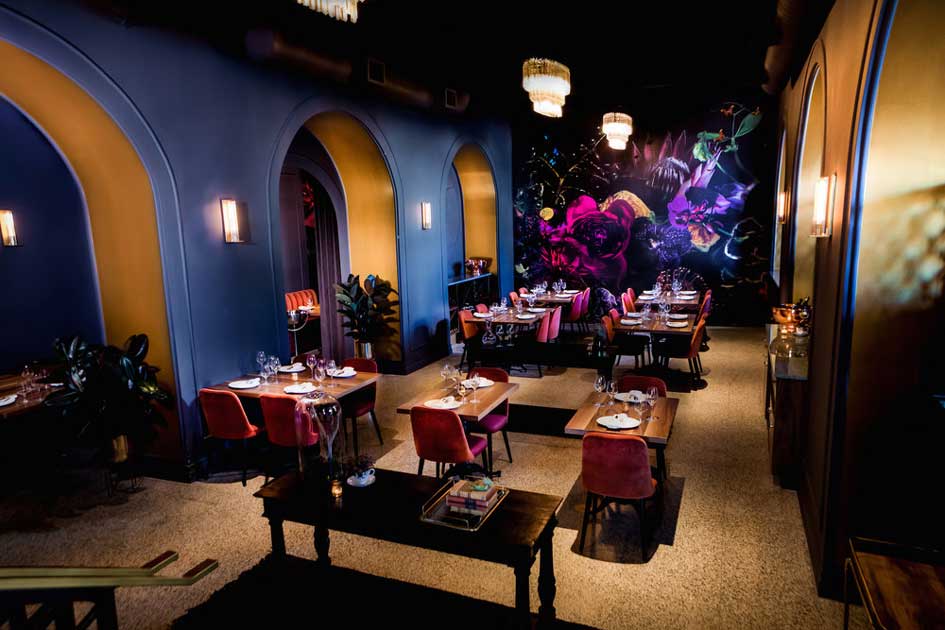Chinese Food Islamabad: Appreciate Authentic Chinese Cuisine at its Best
Chinese Food Islamabad: Appreciate Authentic Chinese Cuisine at its Best
Blog Article
Savor Genuine Oriental Food With a Pan-Asian Spin for a Cooking Adventure
Getting started on a culinary trip via genuine Asian food, improved with a Pan-Asian spin, supplies an unique chance to check out the rich tapestry of flavors that define the area's varied cooking customs. As you contemplate these tempting dishes, think about the social narratives and historical impacts that form them, each bite providing a tale waiting to be uncovered. asian fusion restaurant.

Discovering Pan-Asian Flavors
In the realm of international gastronomy, Pan-Asian cuisine sticks out for its impressive diversity and the unified interaction of tastes from numerous Eastern cultures. This culinary strategy celebrates the distinct active ingredients and abundant customs located across the continent, creating a tapestry of tastes that is both satisfying and interesting. Secret to Pan-Asian cuisine is its capacity to stabilize different tastes-- sweet, salted, spicy, and sour-- while highlighting the quality and top quality of each ingredient.
From the umami-rich soy sauce of Japan to the fiery chili peppers of Thailand, Pan-Asian food provides a considerable combination of flavors. These elements are usually combined in innovative methods, improving dishes with layers of intricacy. For example, making use of fragrant natural herbs such as lemongrass and cilantro, usual in Vietnamese and Thai food, includes a revitalizing brightness to recipes, while the incorporation of coconut milk supplies a luscious, abundant structure.
The focus on fresh produce and aromatic spices ensures that each meal is not only a banquet for the taste buds however likewise for the senses. Pan-Asian cuisine invites restaurants to begin on a culinary trip, exploring the huge and varied landscapes of Oriental gastronomy with every bite.
Combination Dishes to Attempt
While Pan-Asian cuisine is commemorated for its standard flavors, the modern-day cooking landscape is significantly welcoming fusion recipes that blend these timeless elements with influences from other regions. This innovative technique not just honors the abundant heritage of Oriental cooking arts yet likewise presents unique taste experiences that attract modern tastes buds.
An archetype of such a blend dish is the Korean-Mexican taco, where marinaded bulgogi beef is wrapped in a warm tortilla, topped with kimchi and a zesty gochujang-infused salsa. This mix weds the vibrant, mouthwatering flavors of Korea with the vibrant, fresh elements of Mexican food. Similarly, sushi burritos have gained popularity, amalgamating the delicate virtuosity of Japanese sushi with the passionate, hand-held comfort of a burrito, frequently including blend ingredients like tempura shrimp and avocado with a drizzle of wasabi mayo.
Another noteworthy meal is Thai curry ramen, which infuses the creamy, fragrant flavors of Thai curry right into the calming broth of conventional Japanese ramen, producing a harmonious mix that entices the detects. These blend dishes expand past simple novelty; they represent a culinary dialogue between cultures, urging exploration and innovation on the planet of Pan-Asian food.
Necessary Active Ingredients and Spices
To genuinely appreciate Pan-Asian cuisine, one must understand the necessary active ingredients and flavors that form its foundation. This varied culinary design attracts from an abundant tapestry of Oriental customs, employing an unified mix of flavors and structures. Trick components consist of soy sauce, fish sauce, and oyster sauce, which give a mouthwatering umami depth vital to Eastern recipes. Corresponding to these are you can try these out rice vinegar and mirin, offering a fragile level of acidity and sweet taste.
Aromatic aspects are pivotal, with lemongrass, garlic, and ginger being ubiquitous throughout numerous Pan-Asian dishes. These ingredients supply an aromatic base that improves the complexity of flavors. Spices such as star anise, cardamom, and cinnamon present heat and character, resembling influences from areas like China and India.

Cooking Strategies and Tips
Mastering the art of Pan-Asian food calls for experience with its distinctive cooking techniques, each adding to the vivid tapestry of tastes this cooking practice is celebrated for. Central to these methods is the stir-fry, a quick cooking strategy that preserves the dietary stability and vibrant colors of ingredients. Using a wok, the stir-fry method enables also heat circulation, essential for achieving the characteristic appearance and taste balance of Pan-Asian dishes.
One more fundamental strategy is steaming, especially common in Chinese food. This mild technique maintains the natural tastes and nutrients of active ingredients, making it ideal for fish and shellfish and veggies. Dumplings, a beloved staple, commonly benefit from steaming, leading to soft, delicious structures.
Barbecuing, likewise indispensable, imparts great smoky midsts to dishes such as Korean bulgogi or Japanese yakitori (Romantic restaurants Islamabad). This method typically entails marinating components, permitting tastes to permeate deeply before food preparation over an open fire or hot plate
Last but not least, grasping the art of balancing flavors-- sweet, sour, salted, bitter, and umami-- is crucial. Correctly layering these components can raise a dish from ordinary to remarkable, providing a complicated and satisfying cooking experience that embodies the essence of Pan-Asian cuisine.
Dining Experiences Worldwide
Around the world, Pan-Asian cuisine provides an unequaled dining experience, commemorated for its rich tapestry of flavors and lively discussions. This cooking sensation has transcended social limits, recording the hearts and palates of food fanatics worldwide. In worldwide cities like New York, London, and Sydney, Pan-Asian restaurants work as melting pots where cooking practices from Thailand, Japan, China, and beyond assemble, offering restaurants with an eclectic mix of recipes that highlight the region's variety.
The international charm of Pan-Asian cuisine depends on its ability to supply both credibility and advancement. Chefs skillfully marry typical ingredients such as lemongrass, soy sauce, and miso with contemporary techniques, resulting in recipes that are both refreshingly brand-new and acquainted. This fusion allows diners to start a culinary journey that values heritage while embracing modernity.
Moreover, dining experiences are raised with attentively developed atmospheres that mirror the ethos of Pan-Asian aesthetic appeals. From minimalist Japanese-inspired original site insides to vibrant Thai-themed rooms, each our website restaurant offers an unique ambiance that matches the culinary offerings. Consequently, customers are not just eating a dish however partaking in a cultural experience, making Pan-Asian eating an absolutely global phenomenon.
Verdict
The exploration of Pan-Asian cuisine supplies an extensive understanding of the elaborate interaction of flavors and culinary practices throughout Asia. By accepting combination dishes such as Thai curry ramen and sushi burritos, the culinary journey not only highlights the flexibility of conventional active ingredients but also showcases cutting-edge modern techniques. This gastronomic adventure, improved by cooking techniques and necessary spices, offers a distinct possibility to appreciate the social variety and cooking creativity that define Pan-Asian food on an international range.
Getting started on a cooking trip via authentic Asian food, improved with a Pan-Asian twist, provides an one-of-a-kind possibility to explore the abundant tapestry of tastes that define the area's varied cooking practices.In the realm of global gastronomy, Pan-Asian cuisine stands out for its remarkable variety and the unified interplay of tastes from numerous Eastern societies. Key to Pan-Asian cuisine is its capability to balance contrasting tastes-- pleasant, salted, spicy, and sour-- while highlighting the freshness and high quality of each component.

Report this page